The only problem is this requires time.
However, you don’t necessarily need to reinvent your content strategy or wait six months to see results. Chances are, your site already has untapped potential. With the right SEO tweaks and a little strategic effort, you can turn that potential into real organic traffic, starting today.
In this guide, I’ll walk you through twelve proven techniques we’ve used ourselves at Ahrefs to squeeze more traffic out of existing content. No fluff, just practical tactics that work.
If people searching for your topic want fresh information, you’ll lose traffic and rankings if you don’t update your page. Google will simply rank pages with fresher content above you.
On the bright side, this traffic is usually easy to reclaim. All you need to do is replace the old with the new and remove any stuff that is no longer relevant.
For example, people searching for industry statistics don’t want facts from years ago. That’s why our curated lists of industry statistics usually get a boost in traffic when we update them. And it’s less than a day’s work to revisit the stats and replace them if needed.

Here’s how to find pages with the biggest traffic drops over the last six months in Ahrefs:
- Open Site Explorer and enter your domain.
- Go to the Top pages report.
- Set the Traffic filter to Declined.
- Compare with the previous six months and sort the Traffic Change from high to low.

From here, you can eyeball the list of topics where searchers expect fresh information and update them. Our page on “top Google searches” is a good example because searchers don’t care what people searched for in 2021. They want to know what’s popular today.
This is one of the easiest and quickest ways to increase SEO traffic on an existing website.
Search engines increasingly evaluate how comprehensively a piece of content addresses a topic. That’s where topical relevance optimization can create fast wins. In a nutshell, topical relevance means covering all the critical subtopics, entities, and angles that users expect to see when they search for something.
My colleague Louise Linehan put this strategy into practice using Ahrefs’ AI Content Helper, and the results speak for themselves. By targeting underperforming articles and enriching them with missing subtopics, she boosted traffic by an average of 72% across updated pages.
Here’s how she did it:
- Identified content with declining traffic using Ahrefs’ Top Pages report.
- Filtered for articles with minor to moderate edits, which meant they were still ripe for meaningful updates.
- Used the AI Content Helper to spot topic gaps — areas the article didn’t cover that were present in top-ranking competitor content.
- Updated the content in under a day by adding sections that addressed those gaps. For example, a post about SEO audits was improved by adding a section on internal linking strategy and auditing AI overviews.
Check out the video below and the case study to see how you can do the same:
Dead pages are pages that no longer exist on your site. If they have backlinks, this is a huge waste of link equity.
Usually, backlinks are slow and hard to get. After all, they’re one of the strongest ranking factors. But with this technique, you’re in control of the backlinks—so you can give your SEO a boost fast.
- Go to Ahrefs’s Site Explorer and enter your domain.
- Go to the Best by links report.
- Add a 404 filter.

Next, redirect these broken pages to relevant live pages on your site. If a page has been removed by accident, consider reinstating it. The whole process goes like this:
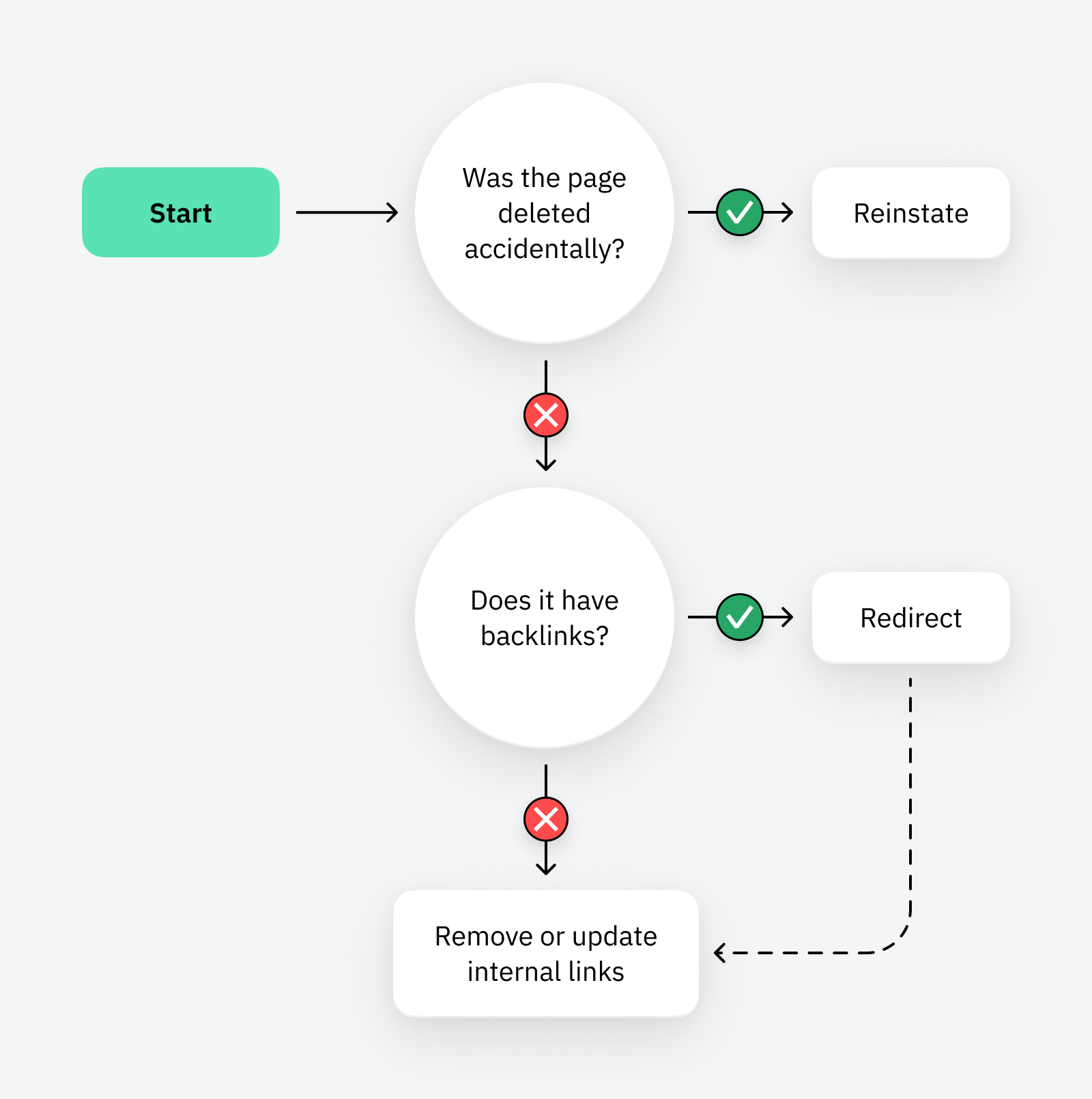
Not sure how to do a redirect? Read our guide to redirects for SEO.
Internal links are links from one page on the same domain to another.
One of their main roles in SEO is that they aid the flow of PageRank (aka “link equity”). This means that you can use internal links to give pages on your site an SEO boost.
For example, we’ve linked from our free backlink checker tool to some of our articles on link building with the aim of boosting their rankings.

The key to improving organic traffic with this technique is to link between relevant pages. Ahrefs’ Site Audit identifies these automatically:
- Go Site Audit and choose the site you want to work on.
- Open the Internal link opportunities tool.

Pay particular attention to the source page, keyword context, and target page columns. These tell you which page to link from, link to, and where on the page to add the link.
For example, there are a few relevant internal links we can add to our list of SEO statistics:

A featured snippet answers the searcher’s question with a short answer. Example:

Since Google shows them on top of other results, this can be your shortcut to the very top. Showing up in more featured snippets will have a sizable impact on growing your organic traffic in a short timeframe.
You stand the best chance of winning the snippet for keywords where you rank 2-8, and Google already shows a featured snippet. Here’s how to find them:
- Go to Ahrefs’ Site Explorer and enter your domain.
- Open the Organic keywords report.
- Filter for Position 2-8 and SERP features where the target doesn’t rank.
- Sort the results by Volume high to low for prioritization.

Winning the snippet comes down to providing more helpful information than what’s already ranking: fresher data, a more accurate answer, a more comprehensive definition of a term, etc.
Unfortunately, there is no silver bullet here, but you’ll find some good tips in our guide to featured snippets.
People want content in their native language when they search Google—even if their search is in English. Google knows this, and uses the searcher’s location and language preference to personalize results.
For example, when I search for “link building,” I get Polish results. This is because Google knows I’m in Poland.

Despite us having a guide to link building, Google doesn’t rank it for me because it’s in English. By translating it into other languages, we could improve its reach and earn more organic traffic.
This is what we did for many of the posts on our English blog.
For example, the Spanish translation of our post about affiliate marketing brings in an estimated 8K organic visits each month.

If you want to follow in our footsteps and increase SEO traffic by tapping into other markets, the best way to get started is to translate your top-performing content. The idea here is that if people are searching for a topic in one language, there are probably people searching for it in other languages.
Here’s how to find your top-performing pages in organic search:
- Enter your domain into Ahrefs’ Site Explorer
- Go to the Top Pages report

You can then ask ChatGPT how someone who speaks another language might search for the topic:

From there, you can simulate a local search for the topic in Google with Ahrefs SEO Toolbar and look at the estimated traffic to the top-ranking pages. This will help you to understand roughly how much traffic potential the topic has in that language and locale.
For example, the top-ranking post about free keyword research tools in French gets an estimated 714 organic monthly visits from France—so it might be worth translating:

If you’ve already made videos that got good engagement — views, likes, comments — chances are, they will do well in search.
Repurposing your best-performing videos into blog posts helps you tap into search traffic that would’ve otherwise missed you entirely.
For instance, one of our best-performing blog posts started as a YouTube video and was then repurposed as a blog post. By repurposing it, we built over 5.3k organic visits each month and 2.3k backlinks on top of 313k views on YouTube.

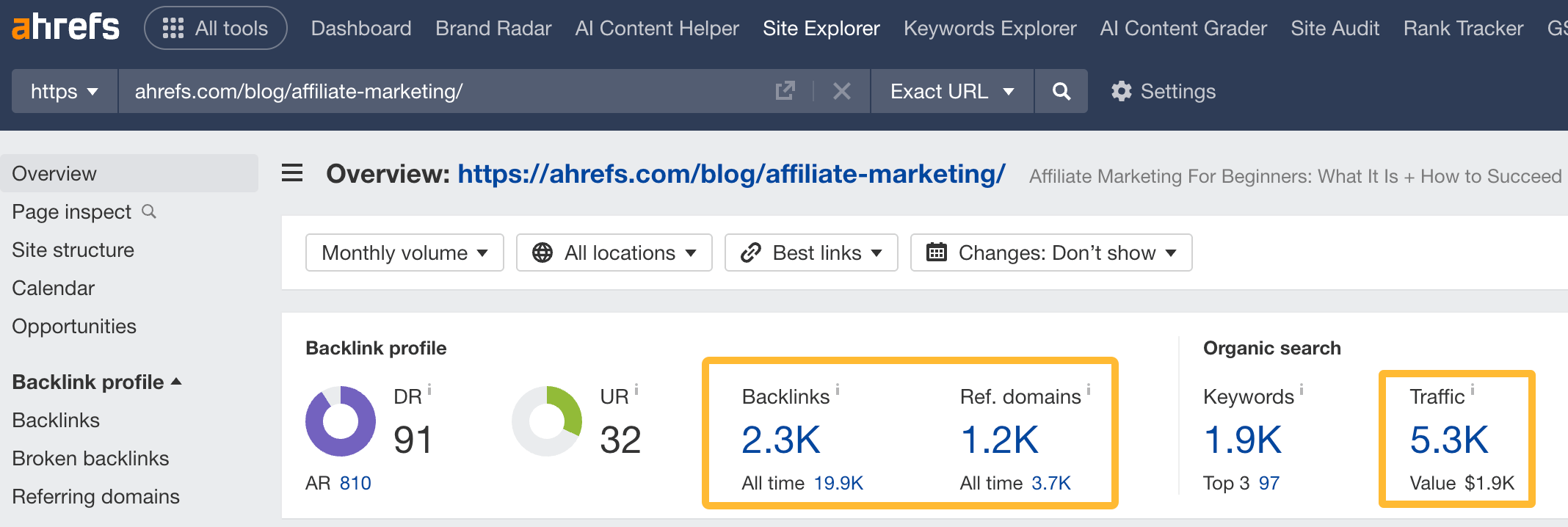
But before you start, check if there’s search demand for your videos’ topics. Simply enter the core topic of your video and some related words in Keywords Explorer.
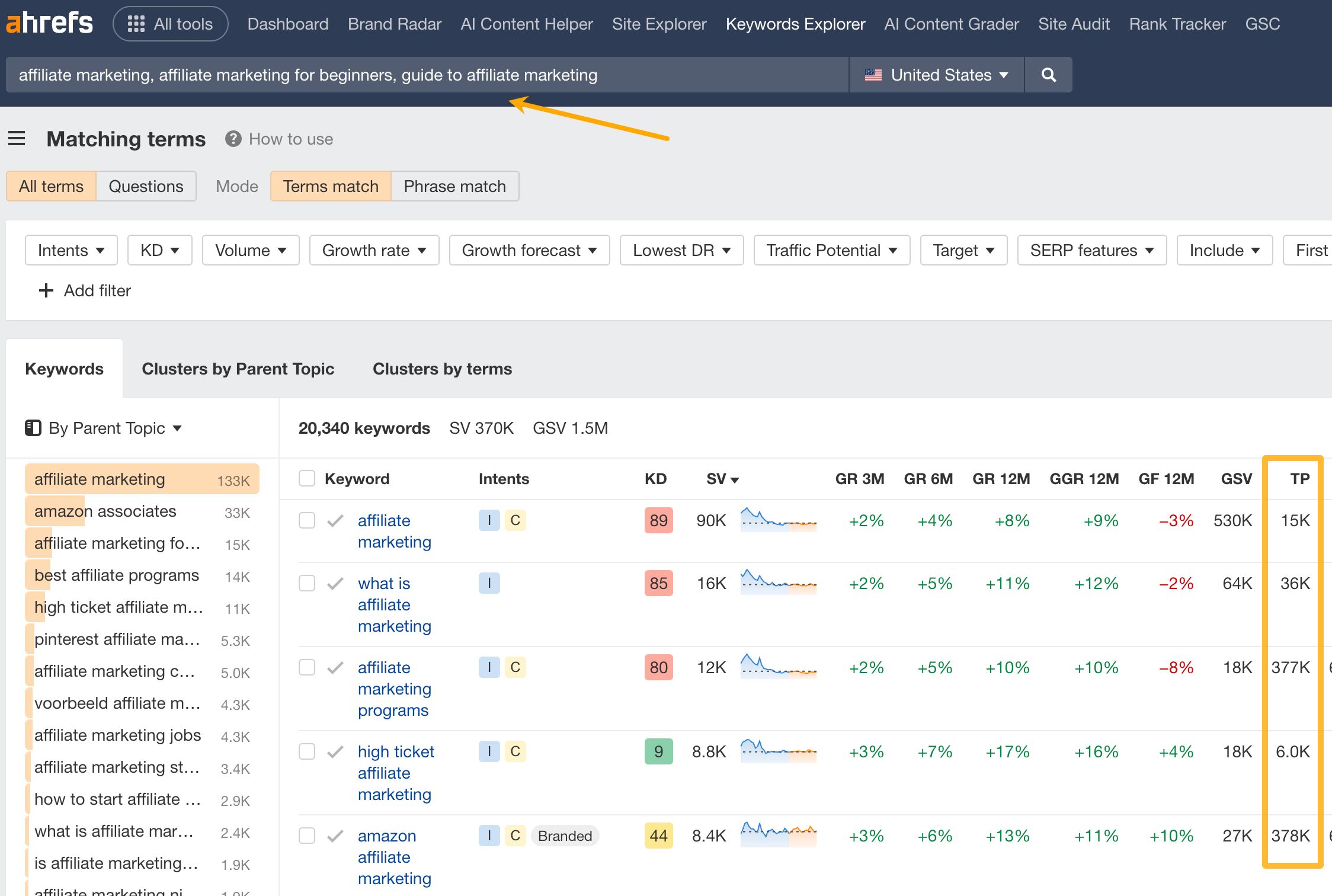
If you can make your titles more compelling to the searchers, you can get more clicks even if your rank stays the same. This technique is about improving organic traffic by focusing on conversion optimization rather than ranking improvements.
With this technique, you’re going to see the biggest lift in content that already brings you traffic. You can find these pages in the Top Pages report in Ahrefs’ Site Explorer or Google Search Console click data.
For us, our list of free keyword research tools gets the most traffic:

Here’s our current title for that post:
The 9 Best Free Keyword Research Tools
Let’s see if ChatGPT can come up with something more interesting and enticing. Here’s the prompt I’ll use:
Give me 10 ways to make this title more interesting and enticing to click: “[current title]”. Keep them under 70 characters. Mention the keyword “[target keyword]” in each one.

I don’t love all of these, but “Boost SEO for Free: 9 Essential Free Keyword Research Tools” sounds like a slight improvement on our current title. It might be worth us switching it out and monitoring if there’s any increase in clicks.
Schema markup is code that helps Google understand the information on a page, which can be used to show rich results (also known as rich snippets).

As you can see above, results with schema are more visually compelling, and because of that, they can often earn more clicks.
There are basically two ways of adding schema to your pages:
- Use your CMS or a plugin. Just fill out some information, and it’ll add the code for you.
- Use a schema markup generator. There are plenty of these around. Just Google it. The benefit here is that you can probably better customize your schema than in the first option. The downside is that you have to add the code yourself.
Either way, it’s always best practice to validate your code. Again, two options here:
- Use Google Rich Result Test or Schema Markup Validator (this one is more thorough).
- For a sitewide check, use Ahrefs’ Site Audit (free with an Ahrefs Webmaster Tools account). It checks for both Google and schema.org validation and shows you exactly what needs to be fixed. For example, this recipe lacks the “calories” property:

If two or more pages target the same keyword and the same search intent, they may hurt each other’s organic performance.
This scenario is called cannibalization; a bad case of multiple rankings. Technically, it’s when a search engine constantly exchanges ranking between multiple pages or when multiple pages rank simultaneously for the same keyword but are similar enough to be consolidated.
If you solve any possible cannibalization issues, your content may rank higher and, as a result, you get more organic traffic.
The fastest way to uncover potential cannibalization issues is to perform a sitewide check with Ahrefs’ Site Explorer.
- Enter your domain.
- Go to the Organic keywords report.
- Switch on the Multiple URLs only toggle.

Next, click on the ranking history button.
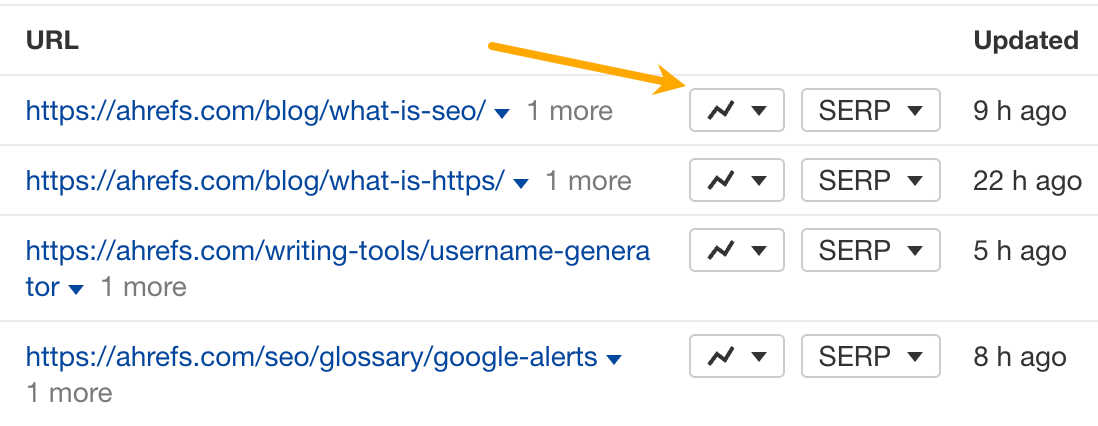
Next, click on the ranking history button. You can spot keyword cannibalization if your ranking history for a keyword resembles this pattern:
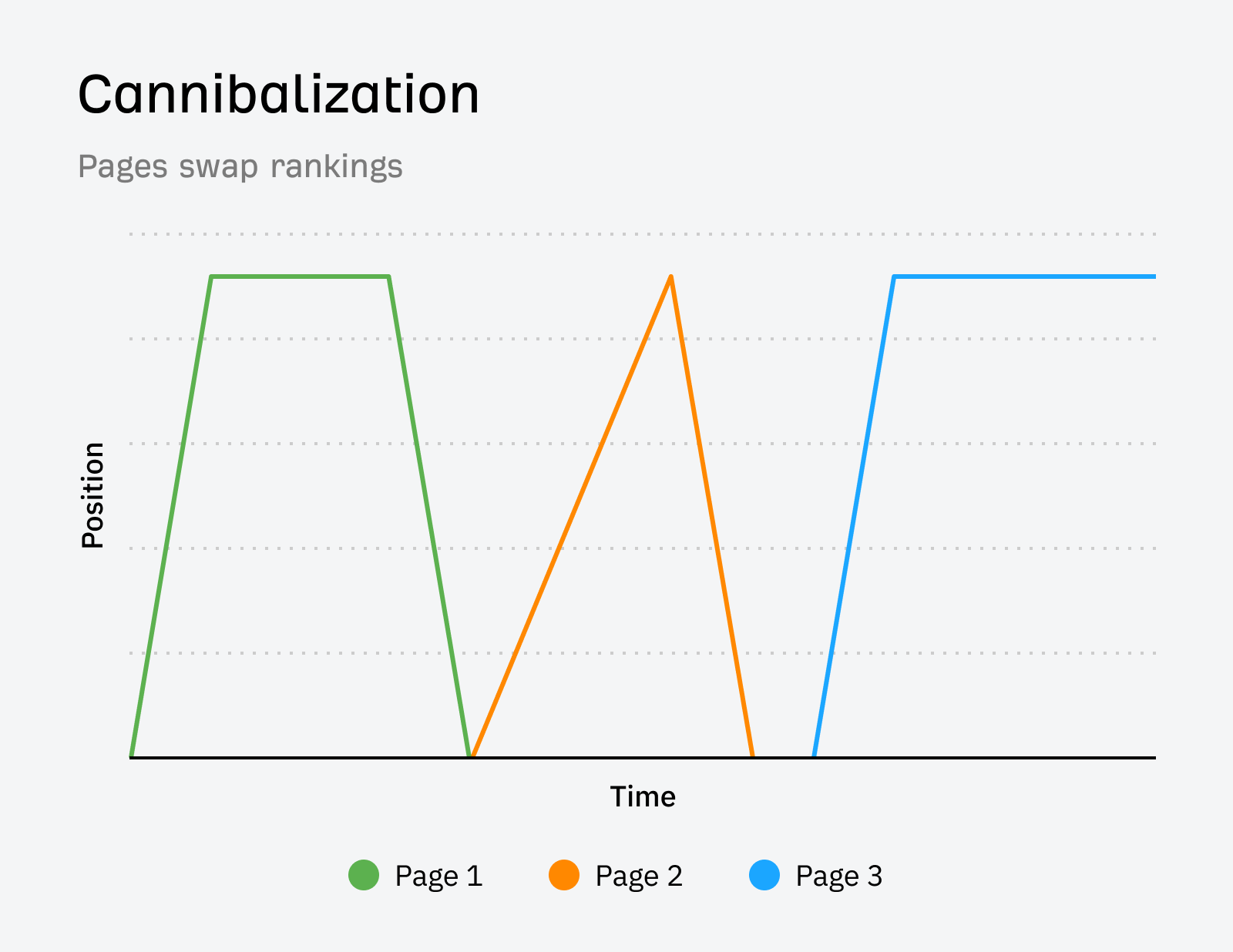
For example, we noticed that swapping pattern for the keywords “seo case studies” and “seo case study”. Despite each case study having a different URL, the repeated use of “case study” in their titles and URLs seemed to cause keyword cannibalization.
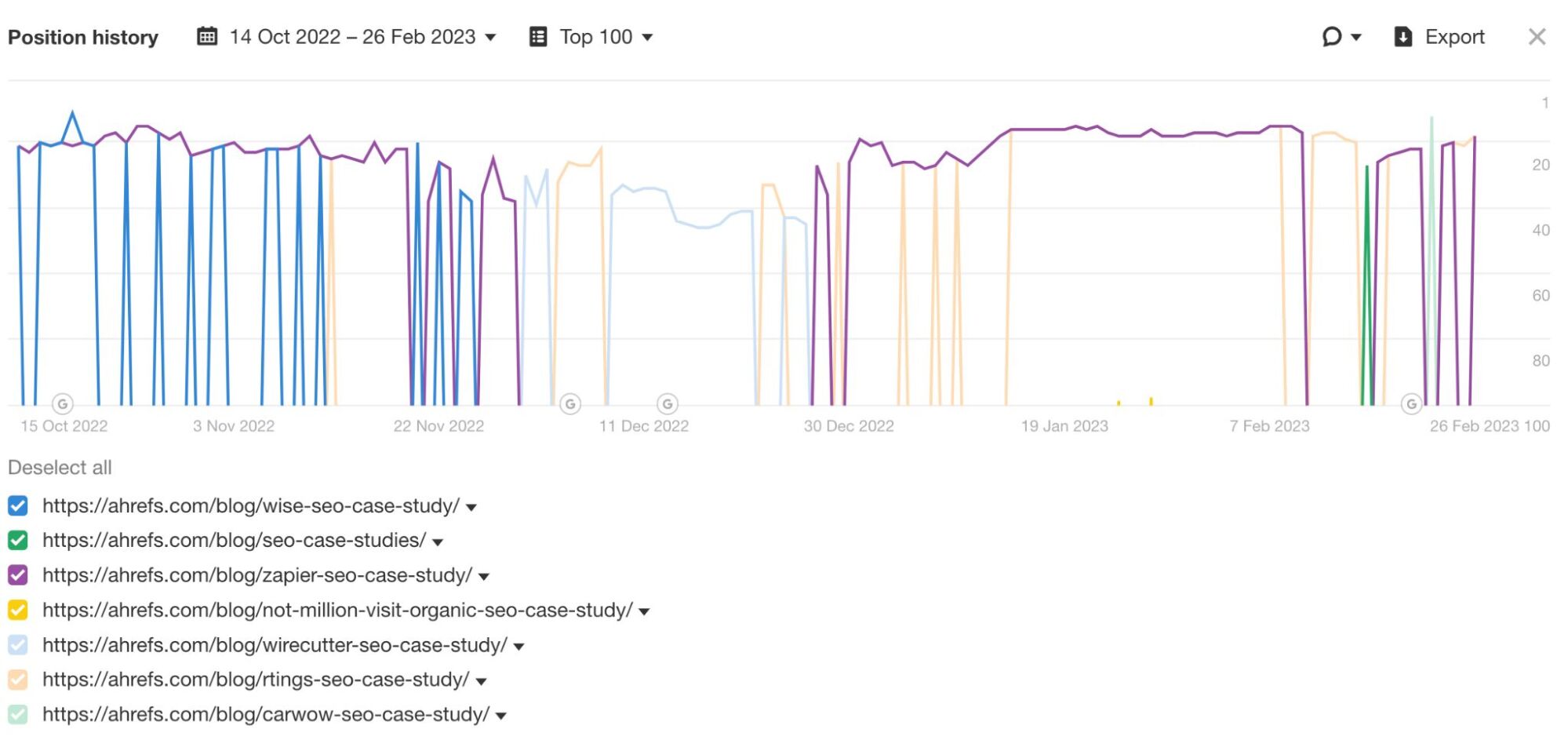
This issue meant that whenever we published a new case study, the older one would drop from the SERPs and be replaced by the new one. To resolve this, we created a basic pillar page that included internal links to all our case studies.
That pillar page quickly reached the top 10 and remained a stable top 3 ranking. Some of the case studies even ranked as site links.

If you’re a local business, the fastest way to get more clicks on your website, clicks on the directions to your place or clicks on your business phone number is to make your Google Business Profile shine.
And if you already set up your business name, category, address and all of the basic information in your Google Business Profile, the next on the list of the most impactful local SEO ranking signals is your Google Rating which is based on your reviews (according to a recent study by Whitespark).
Now, if you have happy customers, the hardest part is already done. Now, all you need to do is kindly remind them to leave a review. You can put up a sign, add it to the receipt, print a QR code on your packaging, or send them a special link via email or chat.
To illustrate, here’s how one of my favorite restaurants asks for reviews: a simple hand-made sign in a place you can’t miss.
 And here’s how I found them in the first place. If it wasn’t for the reviews, they wouldn’t be listed in that map pack.
And here’s how I found them in the first place. If it wasn’t for the reviews, they wouldn’t be listed in that map pack.

Reviews are most powerful if they are received on a constant basis. So don’t make this a one-off review gathering campaign, encourage your customers at all times!
This is probably one of the slowest strategies to carry out, but it could lead to the highest traffic gains.
One of the smartest ways to drive ongoing organic traffic is to transform parts of your product into free, SEO-optimized tools. This tactic is especially powerful for SaaS brands, but it’s also effective for service providers and e-commerce platforms. To create simple tools and put them online, you don’t even need to know how to code these days — AI tools like Replit can do the heavy lifting for you.
At Ahrefs, we’ve done that multiple times: Backlink Checker, Keyword Generator, and Keyword Difficulty Checker, Website Traffic Checker, the list goes on. Here are some of the results:

Why does this work so well?
- People love free tools. Google often has no choice but to rank them high. Quite often, I’ve seen the search intent shift from how-to guides to tools that simply do the job, instead of explaining how to do it.
- Free tools earn links. Bloggers and journalists love linking to useful tools because it make them more helpful for their audience.
- It’s a natural lead-in to your product. Many of these tools give just enough value to make users want the full version. It’s a freemium content strategy in disguise.
But before you start, make sure the tool you want to create has traffic potential. If you’re using Ahrefs, here’s what to do:
- Enter a few broad keywords related to your business (e.g. backlinks, keywords, seo, traffic).
- Head on to the matching terms report.
- Enter words that people could use to find tools, such as “generator, calculator, tool, checker”.
- Look at the traffic potential column (TP) to get an estimate of the organic traffic you could get.
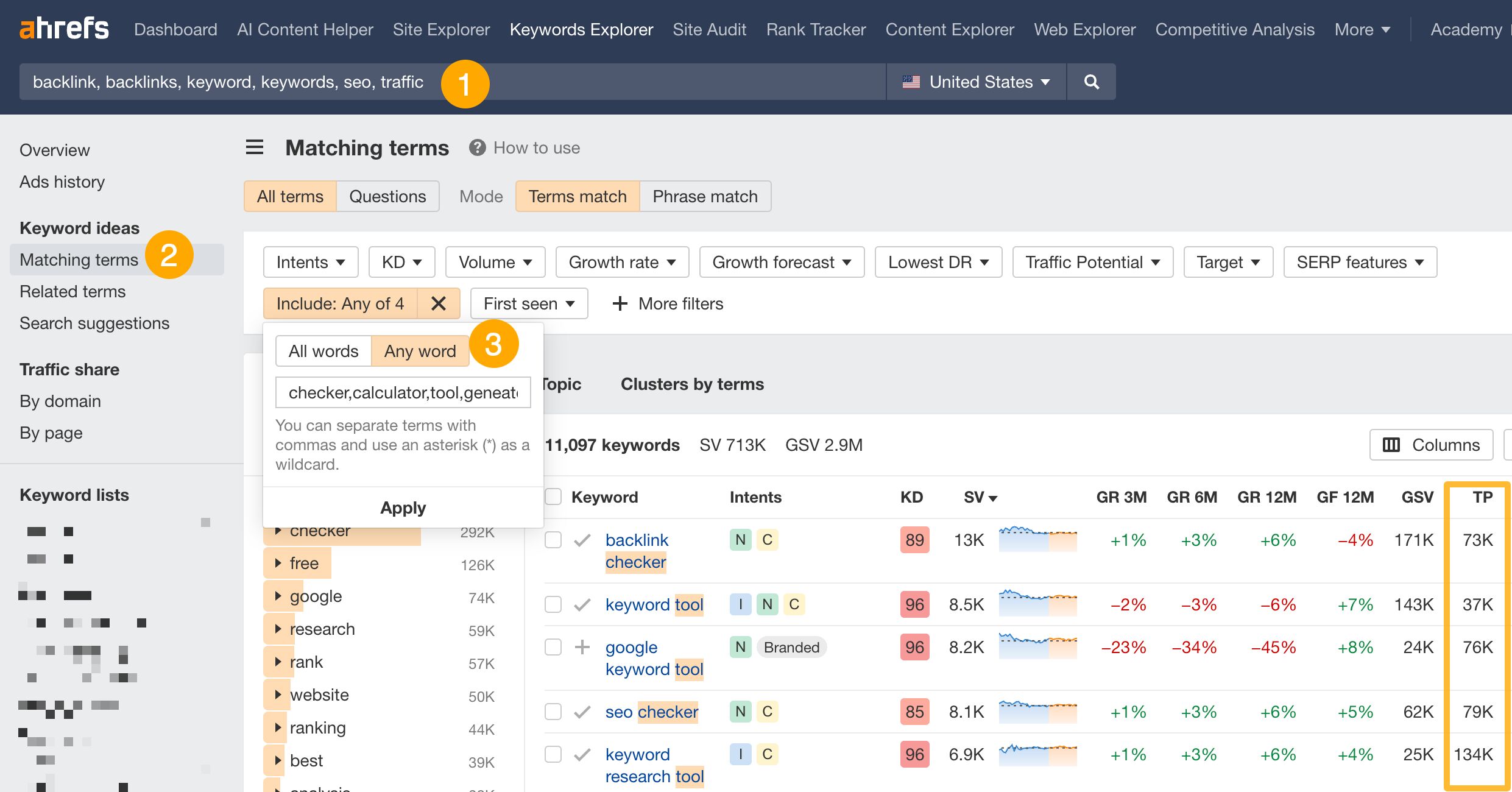
Just as it’s important to know what to do in SEO, it’s also important to know what not to do. Here’s a list of SEO missteps that might not just stall your growth or get you deindexed altogether.
1. Don’t publish off-topic content to chase cheap clicks
Just because a topic is trending doesn’t mean you should write about it. Sites that mix unrelated niches (like tech tutorials and celebrity gossip on the same domain) send confusing signals to Google and risk losing all topical authority. Stick to what your audience comes to you for.
2. Don’t publish thin content
Dumping tens of thousands of pages on your site sounds like growth, but if the content is thin, duplicated, or irrelevant, it’s a fast track to an index bloat problem. Massive page growth with no guardrails is a red flag to both users and Google.
3. Don’t let your backlink profile rot
Having a high domain rating (DR) doesn’t mean much if your backlinks are coming from spammy sites, ccTLDs, or footer-stuffed pages. Worse, if you rely on templated backlinks from subdomains no one visits, you’re inflating numbers without adding value. Read more about link rot here.
Final thoughts
Just in case, it never hurts to run a site audit to check for any technical issues that may hinder your site’s rankings. I’d recommend it, especially if your site was recently redesigned or you inherited the site’s SEO after someone else.
The simplest possible solution is to use a tool like Ahrefs’ Site Audit to find serious issues. The site audit is fully automated, so you can run it in the background when you’re busy with other stuff.

Get more tips on how to increase organic traffic in:



